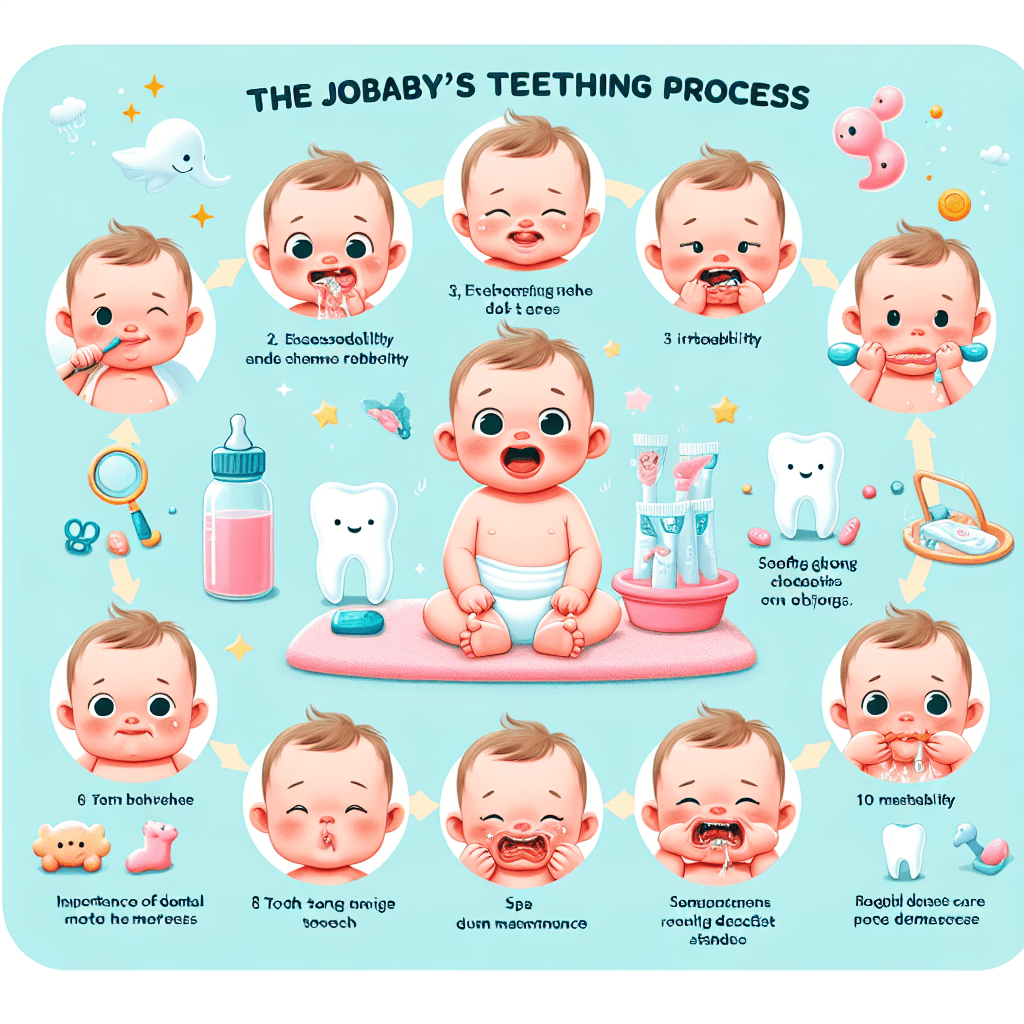Child Development: A Complete Guide to the Essential Stages
The first signs of tooth eruption
Teething is a process by which a child's teeth break through the gums and become visible in the oral cavity. This landmark event in a child's development can begin as early as 3 months of age and continue until around 2 years of age. Early signs of this phase include excessive drooling, an increased tendency to bite or chew solid objects, and some children may experience mild irritability or restlessness. Babies may also have red and swollen gums and may refuse food or a bottle due to discomfort in the mouth.
The order in which baby teeth come out
Although there is variation in the order and timing of baby teething, most often the first teeth to appear are the lower central incisors, followed by the upper central incisors. Then the lateral teeth, i.e. the lower and upper lateral incisors, make their appearance. Next are the first molars, the canines, and finally, the second set of molars. It is essential that parents are aware of this process so that they can correctly identify the child's signs of discomfort and apply pain relief measures accordingly.
Methods of relieving pain caused by teething
When it comes to relieving teething discomfort, there are several effective methods. Massage the baby's gums with a clean finger or a soft baby toothbrush; this massage can provide some relief. Also, cool teething toys – not frozen, to avoid the risk of injuring sensitive gums – can provide significant comfort. In addition, parents can administer, after consultation with the pediatrician, pain-relieving drugs such as acetaminophen or ibuprofen for children.
Adequate nutrition during teething
The child's eating routine can be affected by teething discomfort, as he may refuse solid or even liquid foods. At these times, parents need to be patient and try to offer a variety of soft foods that are easier to chew and swallow. Fruit and vegetable purees, baby cereals and plain yogurt are some of the favorite options. It's important to note that cool foods and drinks can reduce inflammation and soothe sensitive gums.
The importance of an oral hygiene regime since the appearance of the first teeth
With the appearance of the first teeth, the parents' responsibility begins to introduce a proper oral hygiene regimen to prevent cavities and other dental problems. Even if it's just a few teeth, they should be brushed twice a day with a toothbrush suitable for the child's age and a small amount of fluoride toothpaste. In addition to this aspect, regular visits to the dentist, even from the appearance of the first teeth, are essential for maintaining good oral health.
Myths and misconceptions about tooth eruption
There are many myths and preconceived ideas about teething, but it is important for parents to know which are just myths and which are facts supported by medical evidence. One of the most common myths is that high fever and diarrhea are symptoms of teething, when in fact they could be signs of a medical condition that needs medical attention. In general, teething symptoms are local and limited to the mouth area. We have to be cautious and go to the pediatrician to get correct information.
Conclusion
Teething is a major step in a child's development and can be a challenging time for both baby and parents. Understanding the essential stages of this process, identifying the symptoms and applying effective methods to alleviate the discomfort can make this period more manageable. Armed with patience and the right information, you can ensure a smooth transition for your baby in this important phase of his life. Remember to start an early dental hygiene routine and consult your pediatrician for advice specific to your child's case. Taking these steps will bring you one step closer to ensuring healthy development for your little one.














































































































































